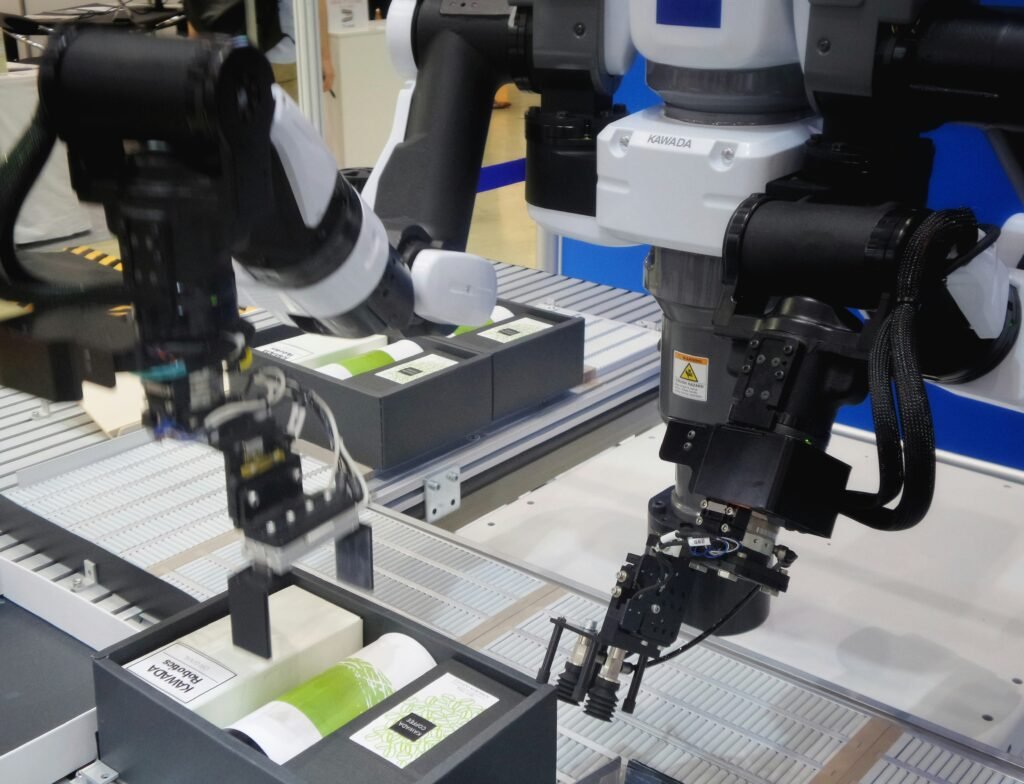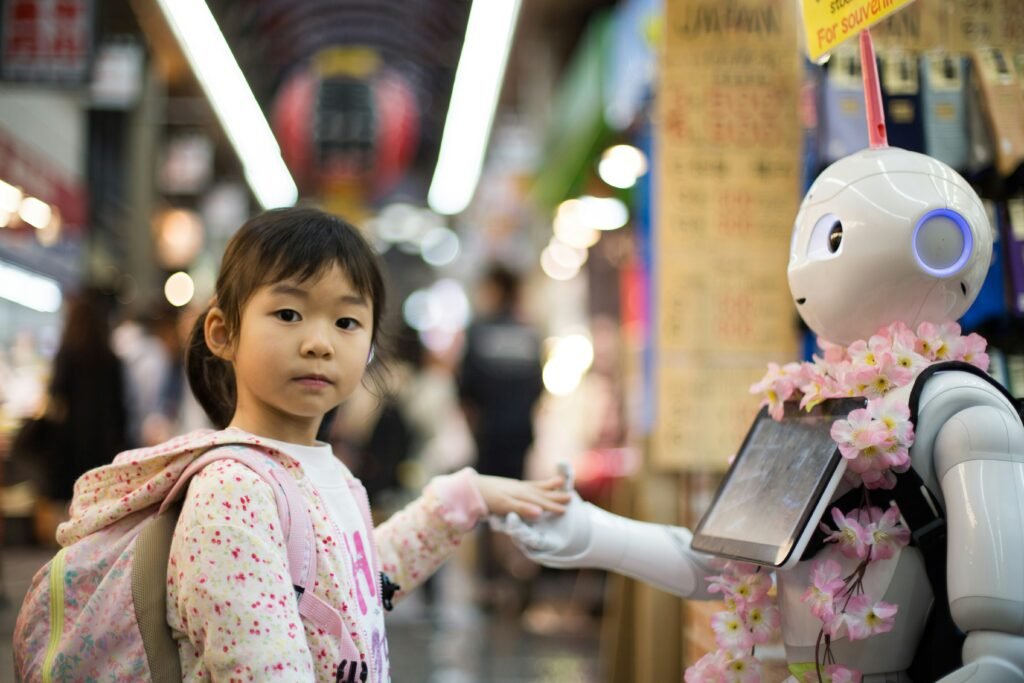Have you ever wondered which specific area is a subset of the vast field of artificial intelligence? In this article, we will explore the different areas that fall under the umbrella of artificial intelligence and identify one particular subset that plays a crucial role in shaping the future of technology. By understanding the distinct branches within AI and their diverse applications, you will gain a deeper appreciation for the immense potential of this rapidly growing field. So, let’s dive into the world of artificial intelligence and uncover the subset that holds immense significance.
Machine Learning
Machine learning is a subset of artificial intelligence that focuses on enabling computers to learn and make decisions without being explicitly programmed. It utilizes algorithms and statistical models to analyze and interpret data, enabling machines to automatically learn and improve from experience.

Supervised Learning
Supervised learning is a type of machine learning where a model is trained on labeled data. The goal is for the model to learn the relationship between the input data and the corresponding output or target variable. With this knowledge, the model can then make accurate predictions or classifications on new, unseen data. Applications of supervised learning include spam detection, image recognition, and sentiment analysis.
Unsupervised Learning
Unsupervised learning, on the other hand, involves training a model on unlabeled data. The objective is to discover hidden patterns or structures within the data without any prior knowledge of the output. Clustering, a common technique in unsupervised learning, groups similar data points together based on their features. Anomaly detection is another application, where the model identifies irregular or unusual patterns in the data.
Reinforcement Learning
Reinforcement learning takes inspiration from how humans and animals learn from trial and error. It involves training an agent to interact with an environment and learn through feedback in the form of rewards or penalties. The agent’s goal is to maximize its cumulative reward over time by taking appropriate actions based on previous experiences. Reinforcement learning is used in areas like robotics, game playing, and optimization problems.
Natural Language Processing
Natural language processing (NLP) is a field of study that focuses on enabling machines to understand, interpret, and generate human language. It combines techniques from linguistics, computer science, and machine learning to process and analyze text or speech data.
Speech Recognition
Speech recognition, also known as automatic speech recognition (ASR), is the technology that converts spoken language into written text. It involves processing audio signals and applying algorithms to convert speech into a digital format that can be further analyzed or understood by machines. Applications of speech recognition range from voice assistants and transcription services to voice-controlled systems in cars and homes.
Text-to-Speech Conversion
Text-to-speech (TTS) conversion is the opposite of speech recognition. It involves transforming written text into spoken words using synthesized voices. TTS systems utilize linguistic rules, machine learning models, or a combination of both to generate speech in a natural and human-like manner. This technology finds applications in assistive technologies for visually impaired individuals, navigation systems, and interactive voice response systems.
Language Translation
Language translation, also known as machine translation (MT), refers to the automated translation of text or speech from one language to another. It enables communication and understanding between different language speakers without the need for human translators. Language translation employs various techniques, including statistical models, neural networks, and rule-based systems. It is used in online translation services, language learning applications, and global business operations.
Expert Systems
Expert systems are computer programs that emulate the decision-making abilities of human experts in a specific domain. They incorporate knowledge and expertise into a set of rules or algorithms to solve complex problems and provide expert-level advice or recommendations.
Rule-based Systems
Rule-based systems utilize a set of if-then rules to make decisions or draw conclusions. These rules are derived from the knowledge and expertise of human experts in a particular domain. The system evaluates input data against the rules to determine the appropriate actions or solutions. Rule-based systems are widely used in fields like medical diagnosis, quality control, and financial planning.
Case-based Systems
Case-based systems rely on a database of historical cases to solve new problems. The system retrieves similar cases from the database and adapts their solutions to the current situation. By leveraging past experiences and their outcomes, case-based systems assist in decision-making and problem-solving. This approach is commonly used in areas such as customer support, legal research, and technical troubleshooting.
Fuzzy Systems
Fuzzy systems deal with uncertainty and imprecision by modeling and reasoning with fuzzy logic. Fuzzy logic allows for approximate reasoning and handling of vague or ambiguous data. Fuzzy systems are useful when dealing with real-world problems that involve subjective or uncertain information. They find applications in areas like control systems, risk assessment, and decision support systems.
Computer Vision
Computer vision involves the use of artificial intelligence and image processing techniques to enable machines to process, analyze, and understand visual data. It enables computers to perceive and interpret images or videos, similar to how humans do.
Object Recognition
Object recognition is the ability of a computer vision system to identify and classify objects in digital images or videos. It involves extracting features or patterns from the visual data and matching them against known object categories. Object recognition has numerous applications, including autonomous vehicles, surveillance systems, and augmented reality.
Image Segmentation
Image segmentation refers to the process of partitioning an image into multiple meaningful regions or segments. Each segment represents a distinct object or region of interest within the image. Image segmentation is crucial for various applications such as medical imaging, video object tracking, and image editing.
Motion Detection
Motion detection involves detecting and tracking moving objects in a sequence of images or videos. It is a fundamental task in computer vision, enabling applications such as video surveillance, action recognition, and human-computer interaction. Motion detection algorithms analyze changes in pixel values or patterns over time to identify regions with significant motion.
Robotics
Robotics is the field of study that combines computer science, engineering, and artificial intelligence to develop and program robots. Robots are mechanical devices designed to perform tasks autonomously or interact with the physical world, often replacing or assisting humans in various domains.

Autonomous Robots
Autonomous robots are designed to operate and make decisions independently, without human intervention. They utilize various sensors, algorithms, and decision-making systems to perceive and interact with their environment. Autonomous robots have applications in areas like manufacturing, agriculture, space exploration, and search and rescue operations.
Collaborative Robots
Collaborative robots, also known as cobots, are designed to work alongside humans in a cooperative manner. Unlike traditional industrial robots, they are equipped with advanced safety features that enable safe interaction with humans in shared workspaces. Collaborative robots find applications in industries such as manufacturing, healthcare, and logistics, enhancing human productivity and safety.
Humanoid Robots
Humanoid robots are designed to resemble humans in appearance and behavior. They often possess artificial intelligence capabilities that enable them to interact with humans in a more human-like manner. Humanoid robots are used in various research fields, entertainment industries, and as companions for the elderly or individuals with special needs.
Expert Advisors
Expert advisors are software applications that provide expert-level advice or recommendations in specific domains or industries. They leverage artificial intelligence techniques and domain knowledge to assist users in making informed decisions.
Financial Advisors
Financial advisors are expert systems that offer personalized financial guidance based on an individual’s financial goals, risk tolerance, and market conditions. These systems can analyze financial data, provide investment strategies, and offer insights into portfolio management. Financial advisors are used by individuals, businesses, and financial institutions to optimize financial decision-making.
Medical Advisors
Medical advisors provide diagnostic, treatment, and patient management recommendations based on medical knowledge and patient data. These systems can assist healthcare professionals by offering suggestions for various medical scenarios, suggesting appropriate medications, or identifying potential diagnoses. Medical advisors contribute to improved patient care, reducing medical errors, and supporting clinical decision-making processes.
Legal Advisors
Legal advisors, sometimes referred to as legal expert systems, assist in legal research, document preparation, and legal guidance. They leverage legal knowledge and rules to analyze legal documents, provide legal advice, and support legal professionals in various legal processes. Legal advisors contribute to increased efficiency, accuracy, and accessibility in the legal field.
Data Mining
Data mining involves extracting useful patterns, relationships, or knowledge from large datasets. It utilizes various techniques from statistics, machine learning, and database systems to discover insights and make informed decisions based on data.

Association Rule Learning
Association rule learning focuses on discovering interesting relationships or associations among items in large datasets. It aims to uncover patterns such as “if item A is purchased, then item B is likely to be purchased as well.” Association rule learning is commonly used in market basket analysis, recommender systems, and customer behavior modeling.
Clustering
Clustering is a data mining technique that aims to group similar data points together based on their intrinsic characteristics or similarities. It is often used to identify patterns or groups within datasets without any predefined class labels. Clustering finds applications in customer segmentation, image recognition, and anomaly detection.
Outlier Detection
Outlier detection, also known as anomaly detection, focuses on identifying data points or instances that deviate significantly from the norm. Outliers can provide valuable insights, be indicative of errors or anomalies, or signify potential fraud or abnormal behavior. Outlier detection is employed in areas such as fraud detection, network security, and manufacturing quality control.
Virtual Assistants
Virtual assistants are software applications that provide interactive and personalized support to users through voice or text-based interfaces. They leverage artificial intelligence, natural language processing, and machine learning to understand and respond to user queries or requests.
Voice-controlled Assistants
Voice-controlled assistants, such as Amazon’s Alexa, Apple’s Siri, or Google Assistant, enable users to interact with devices and perform tasks using voice commands. These virtual assistants can answer questions, provide information, control smart home devices, and execute various commands. Voice-controlled assistants employ automatic speech recognition, natural language processing, and machine learning algorithms.
Chatbots
Chatbots are text-based virtual assistants that simulate intelligent conversation with users through messaging platforms or websites. They can answer queries, provide customer support, and perform certain tasks automatically. Chatbots utilize natural language processing, machine learning, and rule-based systems to interpret and respond to user messages effectively.
Smart Home Assistants
Smart home assistants, also known as home automation systems, integrate virtual assistant capabilities with the control and automation of various devices and appliances within a residential setting. These assistants can control lighting, thermostats, security systems, and entertainment devices based on voice commands or programmed routines. Smart home assistants contribute to increased comfort, convenience, and energy efficiency in modern homes.
Neural Networks
Neural networks are a class of machine learning models inspired by the structure and functioning of the human brain. They consist of interconnected artificial neurons that can process and analyze complex data, recognizing patterns and making predictions.
Artificial Neural Networks
Artificial neural networks (ANNs) are a foundational type of neural network in which artificial neurons, also called perceptrons or nodes, are organized into layers. These networks can learn from labeled data to make predictions or classifications. ANNs have shown remarkable success in various domains such as image recognition, natural language processing, and stock market prediction.
Convolutional Neural Networks
Convolutional neural networks (CNNs) are a specialized type of neural network designed for processing and analyzing visual data, such as images or videos. CNNs employ convolutional layers that can automatically learn and extract relevant features from the input data. They are widely used in image recognition, object detection, and image generation tasks.
Recurrent Neural Networks
Recurrent neural networks (RNNs) are designed to process sequential or time-dependent data. Unlike traditional neural networks, RNNs have feedback connections that allow them to consider previous inputs or context when making predictions. RNNs are employed in various applications such as speech recognition, natural language processing, and text generation.
Game Playing
Game playing has long been a benchmark and testing ground for artificial intelligence algorithms and techniques. Many games require strategic thinking, decision-making, and pattern recognition, making them well-suited for testing AI capabilities.
Chess
Chess is a classic and complex board game that has been a focus of AI research for decades. AI algorithms, including search algorithms, machine learning models, and game tree exploration, have been developed to master the game of chess. Notably, in 1997, IBM’s Deep Blue defeated the reigning world chess champion, Garry Kasparov, showcasing the power of AI in game playing.
Go
Go is an ancient board game with simple rules but an exponentially large number of possible moves or configurations. Mastering Go requires advanced pattern recognition, strategic thinking, and intuition. In 2016, Google’s AlphaGo defeated the world champion Go player, marking a significant milestone in AI’s ability to conquer complex games.
Poker
Poker is a game that combines elements of chance and strategy, making it challenging for AI algorithms. In recent years, AI models and algorithms have been developed to compete against professional poker players. AI poker players have demonstrated remarkable skills in understanding opponents, evaluating probabilities, and making strategic decisions in an uncertain environment.
In conclusion, artificial intelligence encompasses various subsets, each exploring different aspects of intelligent behavior and problem-solving. Machine learning enables computers to learn from data and make predictions, while natural language processing empowers machines to understand and generate human language. Expert systems replicate the decision-making abilities of human experts, and computer vision enables machines to see, interpret, and understand visual data. Robotics brings intelligent machines into the physical world, while virtual assistants enhance human-computer interaction. Data mining uncovers insights and patterns from large datasets, and neural networks simulate the functioning of the human brain. Finally, game playing challenges AI algorithms to showcase their strategic thinking and pattern recognition abilities. These diverse subsets collectively contribute to the advancement of artificial intelligence and its application in various domains.






